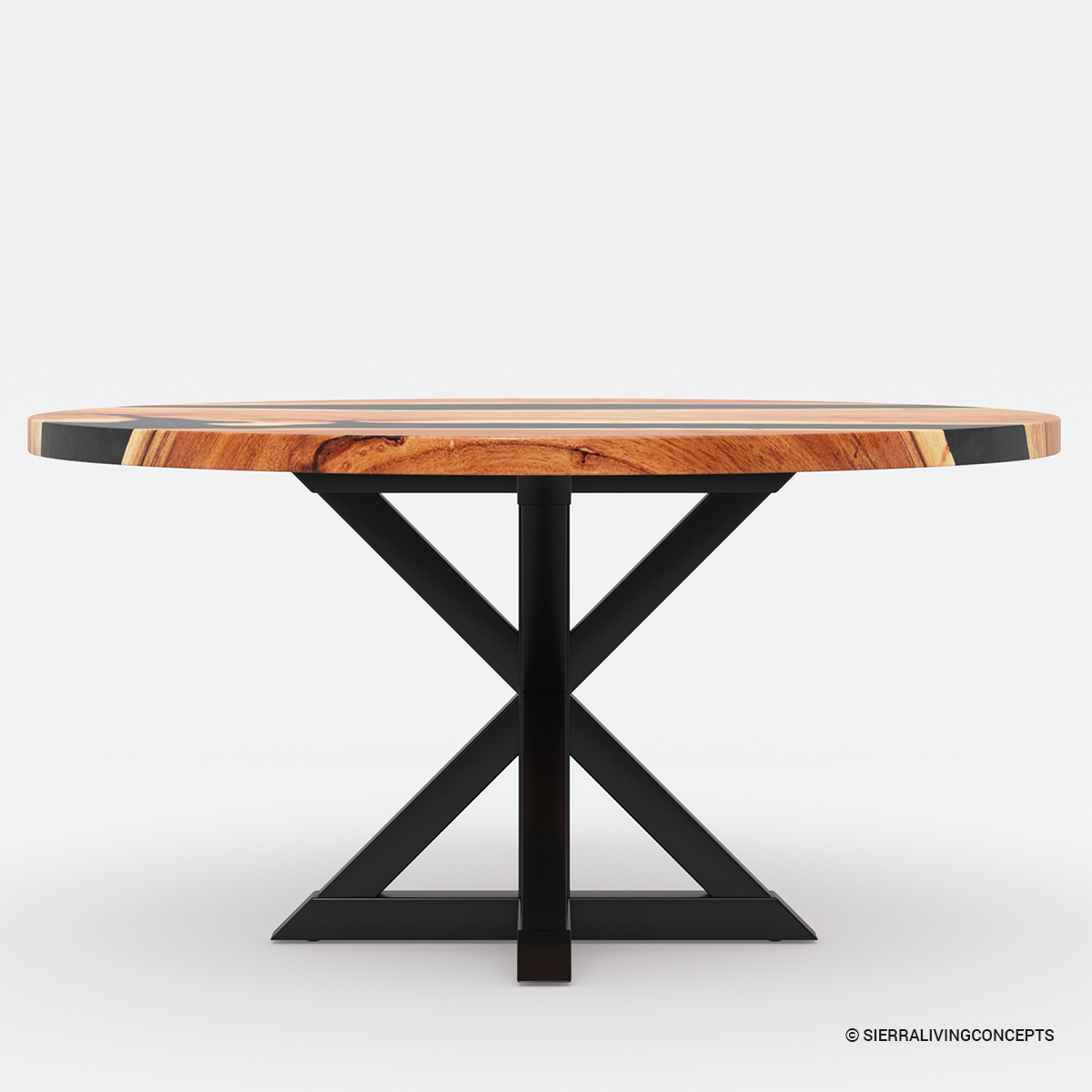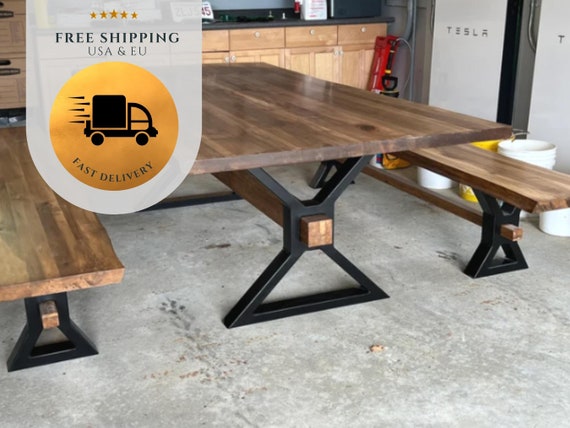How to Choose the Perfect Dining Room Table Legs for Your Home
How to Choose the Perfect Dining Room Table Legs for Your Home
Blog Article
From Typical to Modern: Discover the Suitable Dining-room Table Legs for Your Design
The choice of dining-room table legs plays a critical role in specifying the overall personality of your area, bridging the gap in between conventional workmanship and contemporary appearances. While classic designs such as cabriole and transformed legs stimulate a feeling of timeless elegance, contemporary designs like barrette and geometric alternatives offer a chance for striking aesthetic interest. Assessing the best balance in between these designs needs a nuanced understanding of your existing décor and individual preference. As you think about these aspects, the concern remains: just how can you effortlessly incorporate these diverse leg styles to produce a harmonious dining experience?
Understanding Table Leg Styles
The variety of dining space table leg styles can dramatically influence both the aesthetics and capability of the room. Each leg design adds special functional attributes and aesthetic components, dealing with diverse layout preferences and usage requirements. Comprehending these designs is essential for selecting the best table that lines up with your overall interior design vision.
For circumstances, conical legs use a clean, timeless look that can boost a room's beauty, while pedestal bases provide security and take full advantage of legroom, making them excellent for smaller sized rooms. Barrette legs, a characteristic of mid-century modern style, present an industrial flair, enabling an airy, open feeling. Likewise, trestle legs stimulate rustic charm, offering durable support and a sense of eternity.
Wood legs can bring warmth and texture, whereas steel choices often convey a streamlined, modern ambiance. Eventually, understanding table leg styles is essential for producing a natural dining area that mirrors individual design while guaranteeing usefulness and convenience.
Traditional Table Leg Options
When choosing eating room table legs, traditional alternatives frequently symbolize classic elegance and workmanship. These layouts show an abundant heritage and a commitment to high quality, making them optimal for those that appreciate classic appearances.
One of the most iconic conventional leg styles is the cabriole leg, defined by its elegant rounded form. This layout frequently features decorative carvings and is most typically located in Queen Anne and Chippendale furniture. An additional preferred choice is the turned leg, which flaunts a collection of smooth, rounded shapes that supply a traditional look while keeping security.
In addition, the straight leg, while basic, supplies a strong and basic structure that can mix effortlessly with a variety of tabletop styles. For those drawn to ornate describing, claw-and-ball feet legs evoke a feeling of magnificence and can act as a spectacular focal point in any type of dining area.
Finally, pedestal bases, although not strictly legs, provide an alternate traditional choice that enables enough legroom and can be wonderfully carved. Each of these standard leg designs adds to the general ambiance of a dining-room, weding visit this site function with aesthetic allure.

Modern Table Leg Styles
Modern table leg layouts offer a diverse series of designs that emphasize ingenious materials and tidy lines. These styles commonly prioritize performance while functioning as striking prime focus within a dining space. Minimal aesthetics are widespread, with legs crafted from products such as steel, glass, and crafted timber, which add to a modern and ventilated feel.
One prominent design is the barrette leg, identified by its slim, tapered framework that provides security without overwhelming the table top (dining room table legs). This style is typically located in mid-century contemporary furnishings and can effortlessly enhance numerous eating table shapes. One more fad is making use of geometric shapes, where legs may tackle asymmetrical or angular forms, including aesthetic passion and a touch of virtuosity

Mixing Styles for One-of-a-kind Spaces
Typically, homeowners look for to create one-of-a-kind dining spaces that reflect their personal style by mixing various design components. This strategy enables the unification of diverse looks, resulting in an unified yet unique atmosphere. For instance, combining a rustic wooden table with smooth, modern-day metal legs can develop an attractive contrast that boosts the space's general allure.
In addition, integrating vintage table legs with modern tabletops can stimulate a sense of background while preserving a modern perceptiveness. Such combinations not only showcase private taste yet also encourage imagination, allowing house owners to curate a space that feels both individual and inviting.
Shade plays a critical role in this mixing procedure; selecting table legs that enhance or comparison with the existing shade scheme can improve aesthetic rate of interest. Whitewashed legs can soften the boldness of a dark table surface area, producing a balanced visual.
Tips for Selecting the Right Legs
Picking the right table legs is crucial for achieving both performance and visual appeal in your dining space. Begin by thinking about the general style of your area. Typical setups take advantage of legs that feature complex makings or turned layouts, while modern areas may require sleek, minimal styles.
Next, evaluate the elevation and security of the legs. dining room table legs. Standard table vary between 28 to 30 inches in height, so ensure the a fantastic read legs complement this dimension for comfort. In addition, robust products, such as hardwood or steel, can boost stability and long life
Review the leg shape also-- alternatives include straight, tapered, or pedestal layouts. Straight legs supply a classic look, while conical legs can add a touch of sophistication. Pedestal bases give ample legroom and are optimal for smaller rooms.
Conclusion
In recap, choosing the perfect dining-room table legs requires careful consideration of both modern and conventional styles. Traditional options such as cabriole and turned legs offer classic sophistication, while contemporary designs like barrette and geometric forms offer a contemporary touch. By integrating leg design, elevation, and material with the overall design, a natural and inviting ambience can be accomplished. Ultimately, the chosen table legs should reflect the desired visual, improving the dining experience within the room.
The selection of dining room table leg designs can dramatically affect both the visual appeals and performance of the area. Inevitably, comprehending table leg styles is important for producing a natural eating location that mirrors individual style while ensuring functionality and comfort.One of the most iconic conventional leg styles is the cabriole leg, identified by its stylish curved form. Straight legs supply a classic look, while conical legs can add a touch of elegance.In summary, picking the perfect eating area table legs needs cautious factor to consider of both conventional and modern-day styles.
Report this page